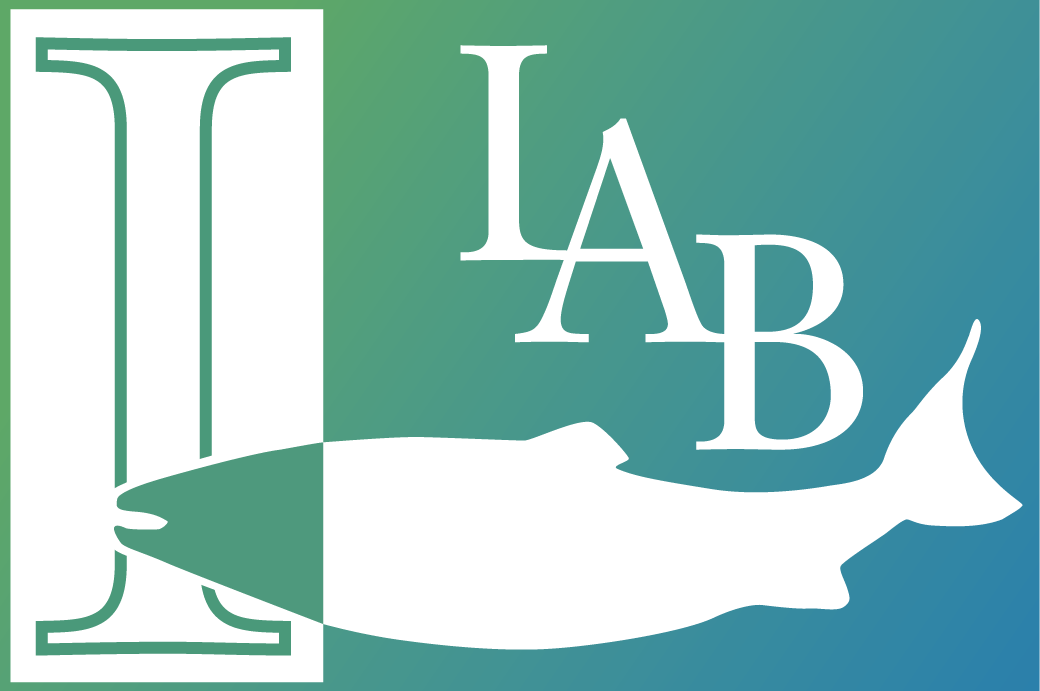ILAB has two departments that sell services. The Research Department is responsible for the long-term leasing of aqua halls and the sale of sea lice, while the R&D department conducts research assignments for customers.
The Research Department
The Research Department rents out aqua halls and disease halls, personnel and associated infrastructure to conduct experiments with fish and other aquatic animals. This type of rental is largely related to long-term contracts. Currently this applies to pharmaceutical companies and the University of Bergen.
For questions on rental, contact Jan Ove Wedaa.

Photo: Lumpfish
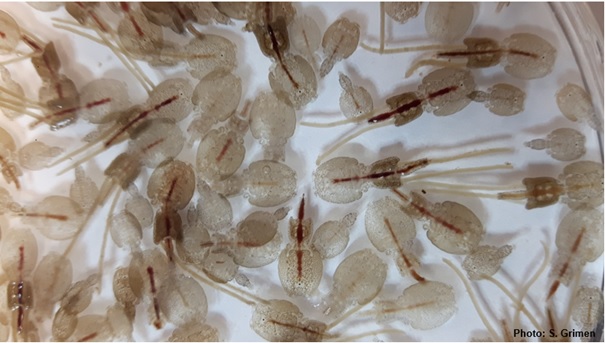
Photo: Adult sea lice with egg-strings
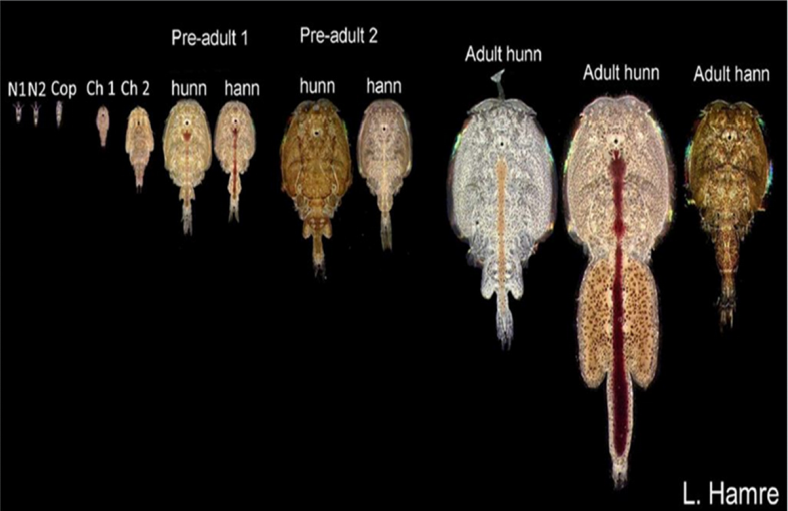
Photo: Different stages of sea lice. Photo: Lars Are Hamre.
Sale of sea lice
Sea lice are a parasitic crustacean, and are currently one of the biggest limiting factors for further growth in the farming of salmonids (salmon and rainbow trout) in open facilities in Norway. ILAB is a recognised vendor where laboratories/businesses can buy sea lice for use in the work to find new methods or agents to control sea lice.
ILAB provides sea lice in all stages, from egg-strings to adult lice, and we export lice to several countries in Europe and North America. In addition to selling lice to other research facilities, we also produce sea lice that are used in experiments at ILAB.
The production line ILAB has established originally derives from sea lice that the Institute of Marine Research collected in 2006. The strain (LsGulen) has little developed resistance to known lice agents. ILAB has kept the LsGulen strain in continuous production since 2012 and checks the lice annually for resistance against Organophosphates, Pyrethroids and Hydrogen Peroxide (H2O2).
For questions related to the purchase of sea lice, contact Jan Ove Wedaa.
R&D department
We offer established infection models for sea lice and Paramoeba perurans, but also assist in developing experiment protocols for other agents or problems the customer wants to find answers to.
Fish health and infection experiments
We provide infection experiments with a number of infectious agents. We have specialised in experiments with Paramoeba perurans (amoebic gill disease) and sea lice (Lepeophtheirus salmonis), as these parasites are a significant challenge to the aquaculture industry and lead to major losses and reduced welfare in farmed fish. We also conduct experiments with bacteria, viruses and other parasites, including Moritella viscosa (winter ulcer), salmonid alphavirus (PD) in infectious salmon anemia virus (ISA).
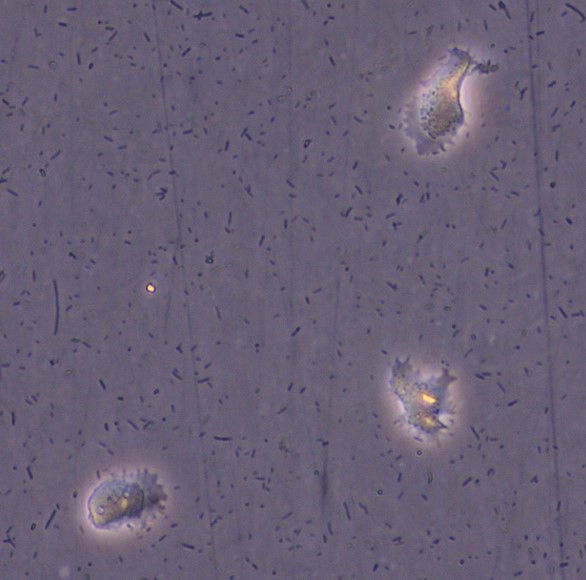
Photo: The amoeba Paramoeba peruans that cause amoebic gill disease in salmon

Photo: The salmon gills to the left have been attacked by the amoeba Paramoeba peruans
Amoebic gill disease (AGD)
Paramoeba perurans is a free-living amoeba that can cause amoebic gill disease (AGD) in salmonids, lumpfish and wrasse. ILAB has kept cultured the amoeba continuously since the autumn of 2013, and from 2014 we have conducted a number of infection experiments with fish and in vitro lab experiments to optimise our infection model. In this period we have also taken part in projects that have procured knowledge on the amoeba’s biology and examined various therapies.
We provide in vitro experiments in the laboratory and infection experiments in fish. The lab experiments one can quickly examine whether a new form of treatment against the amoeba is effective before proceeding to infection experiments. In infection experiments one may investigate the effect of different treatments, the effect of different feeds, or study other aspects of the disease.
Video: Copepodite ready to attach itself to a host
Sea lice
We provide in vitro fexperiments in the laboratory and a well established infection model for sea lice on salmon. In vitro experiments are often used to quickly examine the effect of new substances against sea lice, while infection experiments are used to study the interaction between the lice and the fish or to investigate whether a method is effective against lice while at the same time maintaining good fish welfare.
Other experiments
In addition to infection experiments, we can conduct other types of experiments on behalf of customers, including feed experiments and vaccine trials.
We can also facilitate setups that require a high level of technical expertise and knowledge on water quality, such as CO2 experiments or gas oversaturation experiments.
Feed experiments
Raw material test of fish feed
The access to marine raw materials has declined significantly. From originally using only fish meal and fish oils, fish feed now consists of approx. 70% vegetable ingredients. If growth in aquaculture is to continue to grow sustainably, it is necessary to add new raw materials such as krill, copepod, mesopelagic fish, kelp and insects.
For testing current and new ingredients in fish feed, ILAB has build a raw material test hall where different feed diets for fish can be tested on salmon fry to provide a quick answer to how the various diets perform. The raw material test hall is a service to those without their own test facilities, or those who at times need more capacity to develop feed ingredients for aquaculture.
For questions related to raw material testing, contact Reidar Handegård.
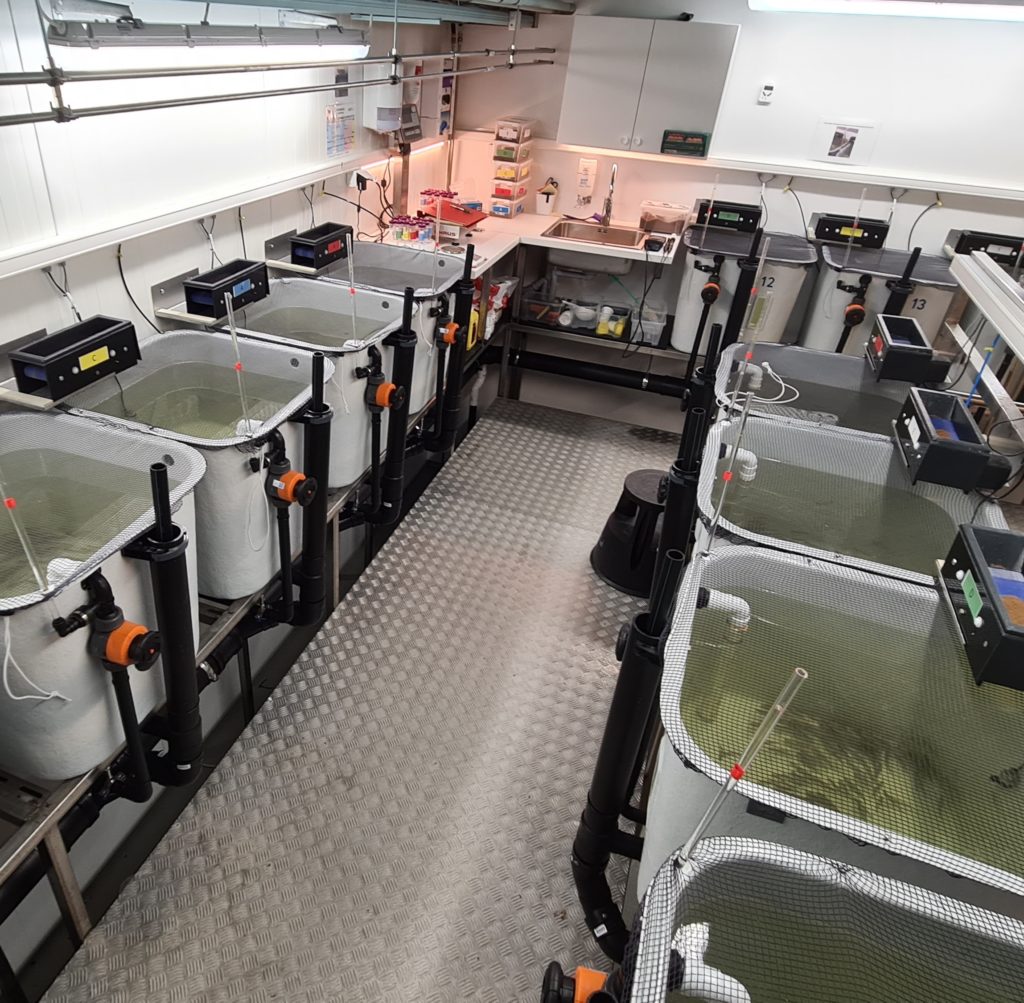
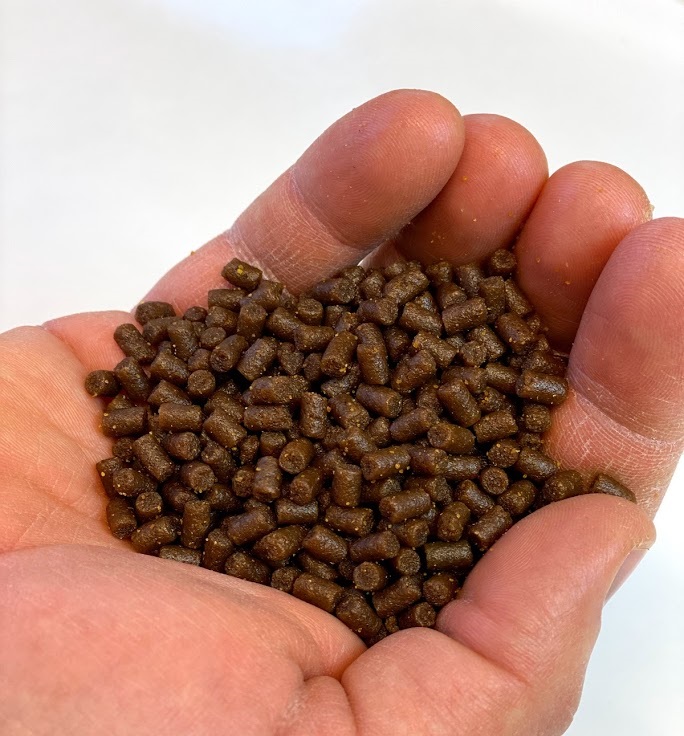
Photo: Feed pellets for salmonids
Benchmarking of fish feed
The raw material test hall has also been designed to carry out benchmarking of fish feed for salmon fry. Here different products may e.g. be run in a triplicate setup and the growth for the different fish feeds can be measured.
For questions related to benchmarking, contact Reidar Handegård.
Video: Exchange water supply to RAS systems
